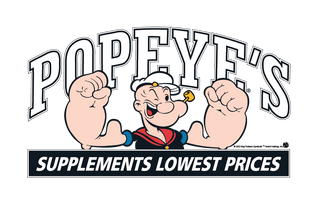
New Product: kre-alkaline creatine

By : Team Popeye's
If you’ve spent any time looking into creatine, then you’ve already met many of its variants, too. The vanilla version of creatine that’s been around for a long time is Creatine Monohydrate. It’s the most common and most used form, by far. If you’re reading a product label and it doesn’t specify which kind of creatine is in it, the safest assumption will be to that you’re looking at Monohydrate. But, there’s new types of creatine that have popped up over the years, all with their own features and attributes.
But, before we begin, let’s clear up a misconception that has developed around these creatine variants. Each of these variations and types do one fundamental thing – deliver creatine to your body, where it gets processed and converted to creatine phosphate. This means that the final effect of creatine will be the same no matter which type you end up choosing. Creatine accumulates in your body up to its natural limit, and by our knowledge, there is no form of creatine that can force your body beyond that. So, don’t worry about if one form of creatine is superior to another – it all ends up in the same place!
But, to say that all forms of creatine are identical because they all produce the same result would be like saying all cars are the same because they can all drive you to work. Driving to work in a fancy sports car is a different experience to driving in a Honda Civic, or a pickup truck. Creatine is the same way. In fact, you can think of Monohydrate as the Honda Civic of creatines, reliable, consistent, and has been around since the 70s. But as with automobiles, there’s always a newer model to try out.
One of the new models that might be of interest is Kre-Alkalyn creatine. Creatine has always had a weakness, and not one people expect. Creatine has always been pH sensitive. Specifically, it doesn’t deal with acid very well. Low-pH (acidic) solutions are known to degrade creatine into creatinine (a useless metabolite of creatine) much faster high-pH (alkaline) solutions, which is quite an issue, as many people might use fruit juices to accompany their creatine monohydrate intake – all of which are acidic. So, if you were to mix your creatine monohydrate in juice when taking it, a significant amount of it is broken down into creatinine before it gets into your body! Which is why we told you not to use juice in our last blog post!

By contrast, Kre-Alkalyn offers creatine monohydrate, but in a format that is stabilized with an acid buffer. This acts to minimize the breakdown that occurs when creatine is put in an aqueous (Water) environment, especially an acidic one. The result is that you have better and easier uptake and absorption of creatine, and can consume less creatine for the same final results. This might be of huge importance for those with sensitive digestion, who find that normal creatine monohydrate supplementation might be a problem for them, or for those who would rather take creatine as a pill over a powder!
The best (and original) formulation of Kre-Alkalyn creatine is, of course EFX’s KreAlkalyn creatine, which offers the best pH buffer that sits at a pH of 12 – a pH which few others can match in potency and effectiveness. You can take a look at it here to see for yourself!





